“Yeah, I hope we get to play in the US Open. Why not? I think it’s good for the sport—one and two in the world facing each other in almost a five-hour, five-set thriller. It couldn’t be better for our sport in general, so why not?” — Novak Djokovic, after Carlos Alcaraz dethroned him at the 2023 Wimbledon final.
Tennis thrives on rivalries, especially between iconic champions who treat us to classic matches. The renowned Big Three of Djokovic, Rafael Nadal, and Roger Federer produced three of the greatest rivalries in tennis history, surpassed in length only by the 80-match competition between legends Martina Navratilova and Chris Evert. All these duels featured champions fairly close in age, which, in part, accounted for their longevity.

The last four men’s Grand Slam titles, however, have been won by 36-year-old Djokovic and 20-year-old Alcaraz. Djokovic’s advanced age and Alcaraz’s advanced game ensure their rivalry won’t last more than two or three years, but while it lasts, it should prove extremely entertaining and historic.
READ – US Open 2023 men’s draw: Alcaraz vs Sinner, Djokovic vs Tsitsipas amongst projected quarterfinals
Interestingly, the new Big Two didn’t clash at either the 2022 US Open or the 2023 Australian Open for very different reasons. When Djokovic’s refusal to be vaccinated for COVID-19 denied him entry into the U.S., Alcaraz seized his first major title, taking three late-night, five-set thrillers before overpowering Casper Ruud in a four-set final. And when injuries kept the Spaniard from competing in Melbourne, the Serb romped to the final, where he outclassed Stefanos Tsitsipas.
Their first Grand Slam showdown came in the French Open semifinals. It provided a smorgasbord of scintillating shots, but only for two sets. Unfortunately, full-body cramps then debilitated Alcaraz (below), and Djokovic surged to a 6-3, 5-7, 6-1, 6-1 victory for his 23rd major title, breaking the men’s record he had shared with Nadal.
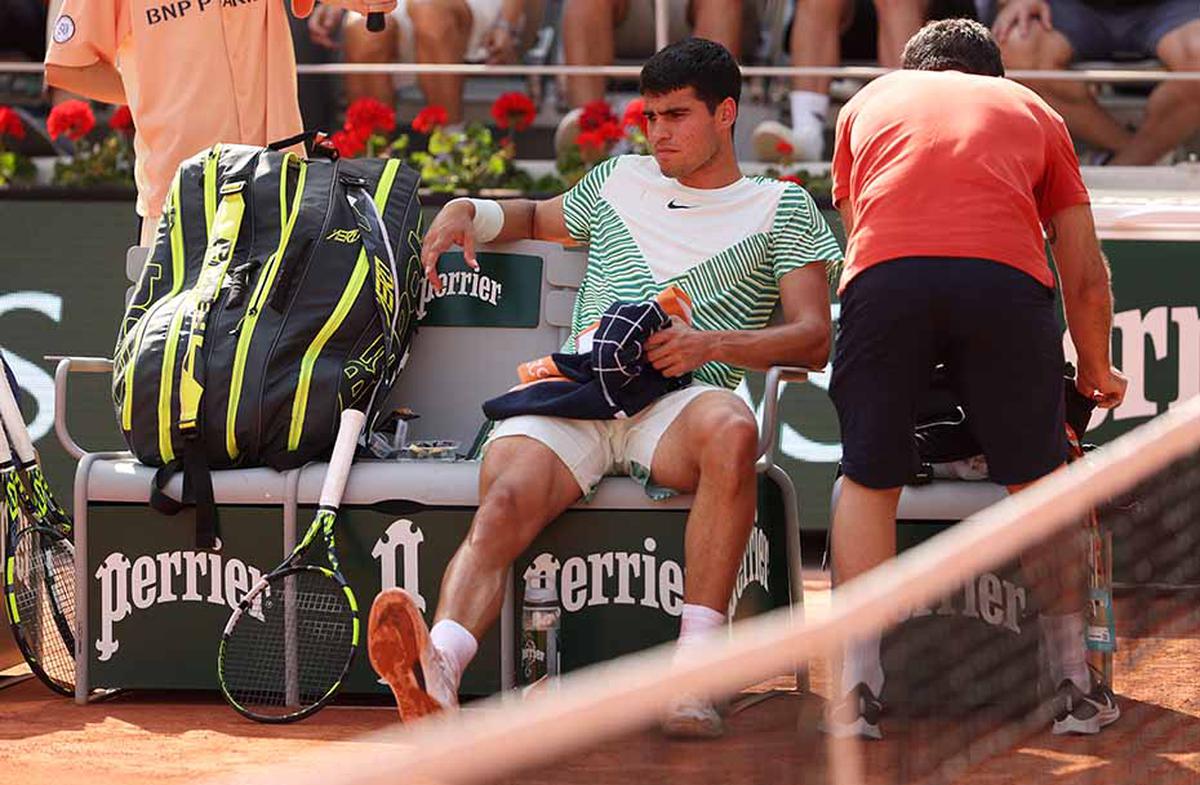
FILE PHOTO: Carlos Alcaraz suffering from cramps during the French Open 2023 semifinal against Novak Djokovic.
| Photo Credit:
Getty Images
FILE PHOTO: Carlos Alcaraz suffering from cramps during the French Open 2023 semifinal against Novak Djokovic.
| Photo Credit:
Getty Images
Just five weeks later, Alcaraz exacted revenge at Wimbledon. A big Rocky movie fan, Alcaraz listens to “The Eye of the Tiger” to fire himself up before every match. Alcaraz needed it in the final because he dropped a dismal opening set 6-1 before recovering for a memorable 1-6, 7-6(6), 6-1, 3-6, 6-4 triumph to end Djokovic’s bid for a calendar-year Grand Slam.
Had age finally caught up to the tennis GOAT? Or did super athleticism and high energy simply trump efficiency and experience? And was the Wimbledon final a turning point in their budding rivalry and battle for supremacy?
“I see it as a changing of the guard,” said three-time Wimbledon winner Boris Becker during Eurosport’s Das Gelbe vom Ball podcast. “I see it as a game [match] that will go down in history, and we’ll be talking about it in 10 years. This is the day Carlos Alcaraz came of age, and we’ve seen a lot of praise in the last 48 hours. But who did he do it against? Yes, against the most successful of all time, so not just anyone. Certainly, he won the US Open last year against Casper Ruud in the final and was already No. 1 in the world rankings, even before the tournament. But at the end of the day, you have to show it in a Grand Slam final against the best, and that’s Djokovic. And how did he show it!”
Let’s size up contenders who might threaten the Big Two and then predict the winner of the season’s final Grand Slam tournament:
Jannik Sinner: On the New Gen standouts, Alcaraz said, “For me, Jannik Sinner is my biggest rival now.” The 21-year-old Italian has won three of their six encounters, showing his surface adaptability by doing it on hard, grass, and clay courts. All of the Spaniard’s wins have come on hard courts, most notably his come-from-behind, five-setter at the 2022 US Open.
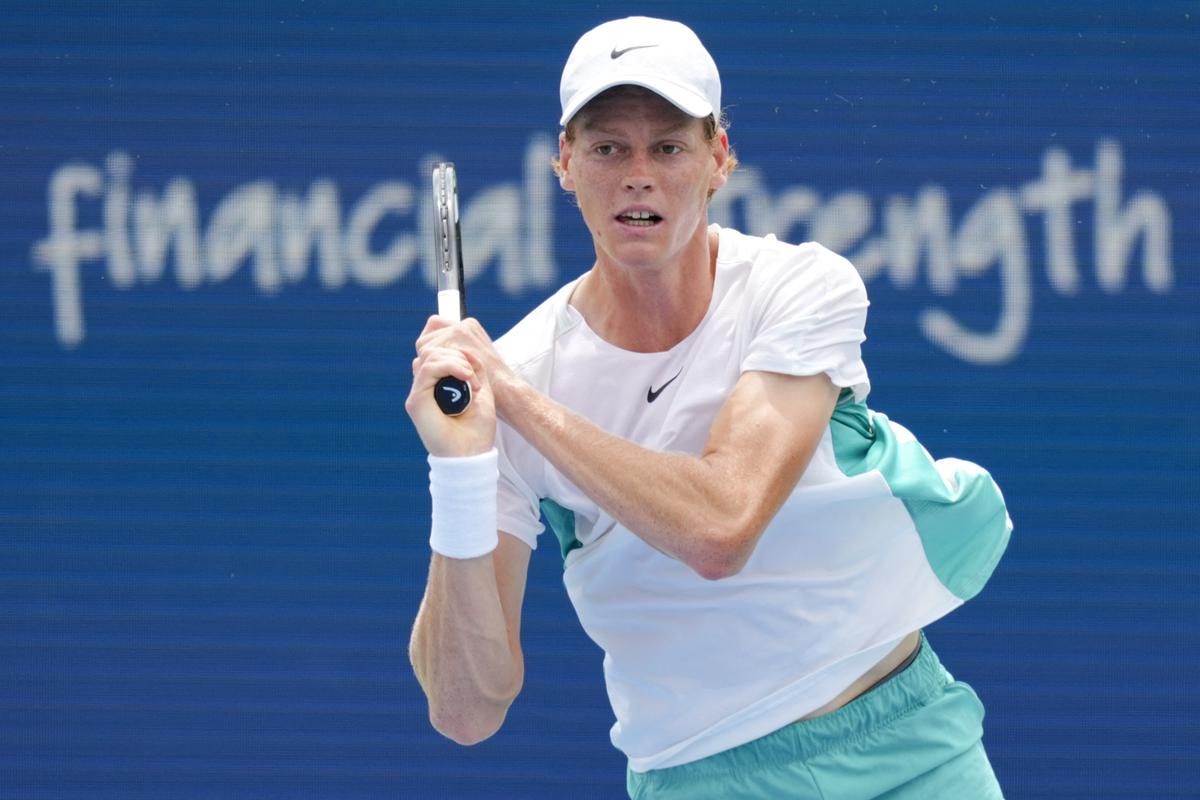
FILE PHOTO: Jannik Sinner.
| Photo Credit:
Getty Images
FILE PHOTO: Jannik Sinner.
| Photo Credit:
Getty Images
Elite coach Darren Cahill has encouraged Sinner to add drop shots, angles, changes of pace, and more net approaches to his highly effective but predictable power game. That worked at Wimbledon, where Sinner reached his first semifinal before Djokovic stopped him 6-3, 6-4, 7-6(4). Succumbing to the pressure, Sinner blew two set points with unforced errors, failed to convert on six break-point chances, and faltered in the tiebreaker. The loss dropped Sinner’s record to an abysmal 0-8 against top-5 opponents at Grand Slam events.
Sinner can’t match Alcaraz in sheer athleticism, shot versatility, or tactical acumen. Who can? But he’ll reach the quarterfinals and perhaps the semifinals at Flushing Meadows.
Holger Rune: Like Holger Danske, a Danish resistance group under Nazi occupation during World War II, this Holger is combative and relentless. He’s tamed his teenage temper and unleashed his vast talent to notch up wins over Djokovic (twice), Alcaraz, Ruud, Sinner, Tsitsipas, Daniil Medvedev, Andrey Rublev, and Alexander Zverev. An all-court player whose game excels on every surface, Rune ranks No. 5 in the ATP “Under Pressure Leaders,” winning 69.2 of his tiebreakers.
Much like the six-day-younger Alcaraz, the ruggedly built 6’2” Rune radiates passion when he competes. “I’m living my dream 100 percent. I love tennis,” he said during Wimbledon, where Alcaraz ousted him 7-6(3), 6-4, 6-4 in the quarters. It marked the first time in the Open Era that both Wimbledon men’s quarterfinal opponents were under 21.
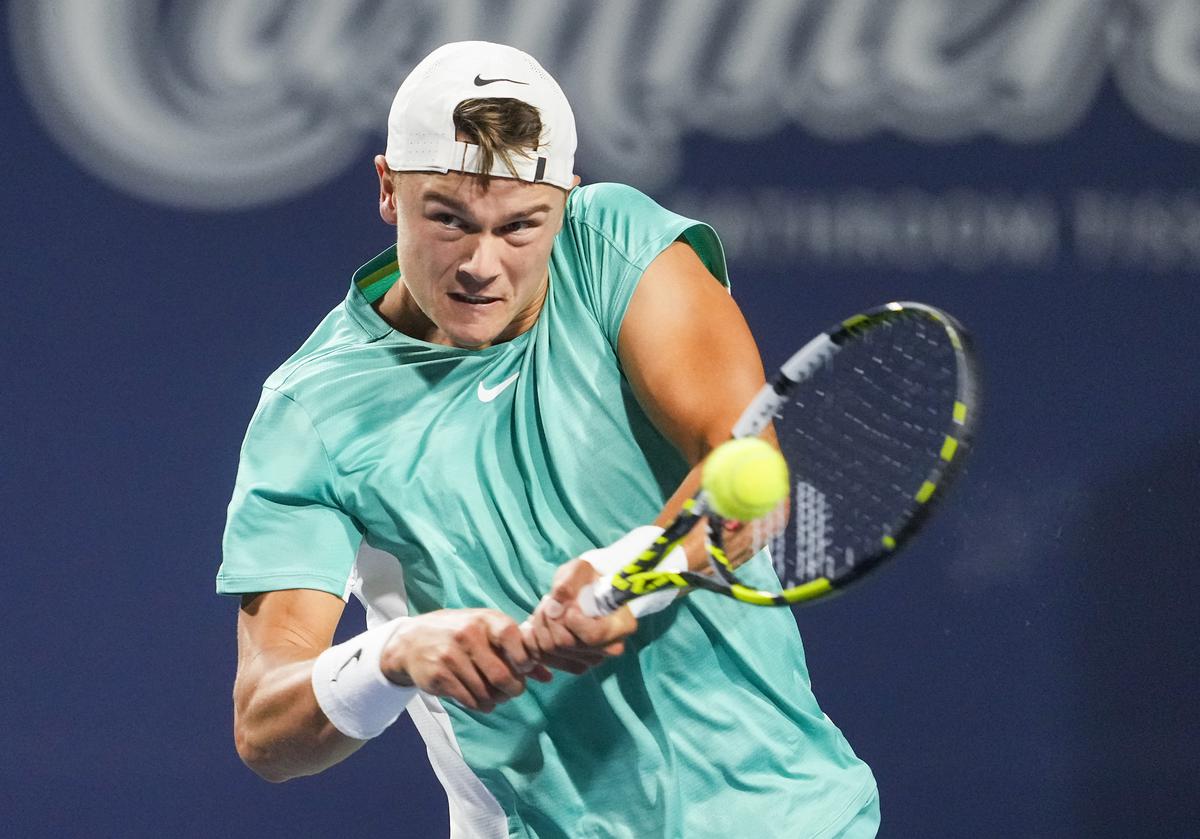
FILE PHOTO: Holger Rune.
| Photo Credit:
AP
FILE PHOTO: Holger Rune.
| Photo Credit:
AP
The Dane’s arsenal contains plenty of weapons, such as a powerful first serve, an effective kick second serve, a sound volley, an improved forehand, and speedy court coverage. When asked what he’d like from Rune’s game, Alcaraz replied, “I would love his backhand. His backhand is awesome.”
Unless he runs into the Big Two in the quarterfinals, Rune should advance to his first US Open semifinal.
Daniil Medvedev: He’s nicknamed “The Octopus” for his gangly 6’6” frame and long arms that seem to encircle and defuse enemy shots and send them back. But has The Great Defender been exposed as The Great Pretender?
Since denying Djokovic a Grand Slam in the 2021 US Open final and losing the super-close 2022 Aussie Open final to Nadal, the 27-year-old Russian has gone 6-11 against top-10 opponents, including three losses to Djokovic and two decisive losses to Alcaraz.
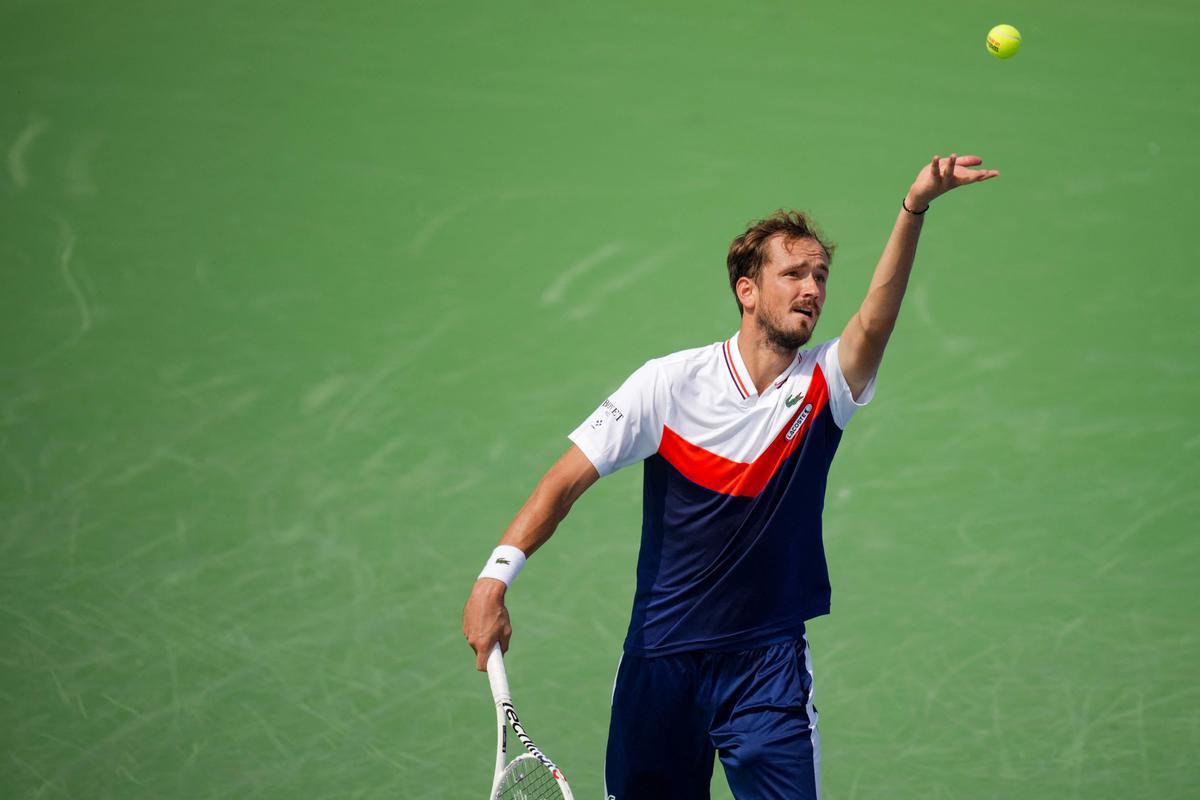
FILE PHOTO: Daniil Medvedev.
| Photo Credit:
Getty Images
FILE PHOTO: Daniil Medvedev.
| Photo Credit:
Getty Images
Positioning himself 15 feet behind the baseline and often outside the sidelines for serve returns—and in untenable spots during rallies—has become a losing proposition as his foes drop shots and force him to volley, his weak leak. Even so, Medvedev captured four tournaments this season, all on hard courts, his favourite surface.
A favourable draw would help No. 3 Medvedev reach the semis, but he could easily get upset before then.
Stefanos Tsitsipas: Despite ranking in the top six for the past four years and winning 10 tournaments (five on hard courts), Tsitsipas, still only 25, has plateaued. Stunningly, the handsome Greek hasn’t defeated a top-15 player this year.
What’s gone wrong? Although Tsitsipas boasts one of the best volleys on the ATP Tour and a powerful serve, his loopy, non-penetrating one-handed backhand too often breaks down on serve returns, passing shots, and long rallies. To compound the problem, his tactics are flawed.
“You have to keep the ball in play and use your athleticism from there,” advised former No. 1 Jim Courier. “He should take a leaf from [Pete] Sampras’s and Federer’s books.” Both former superstars blocked big serves back to cut down on return errors rather than take huge backhand backswings.
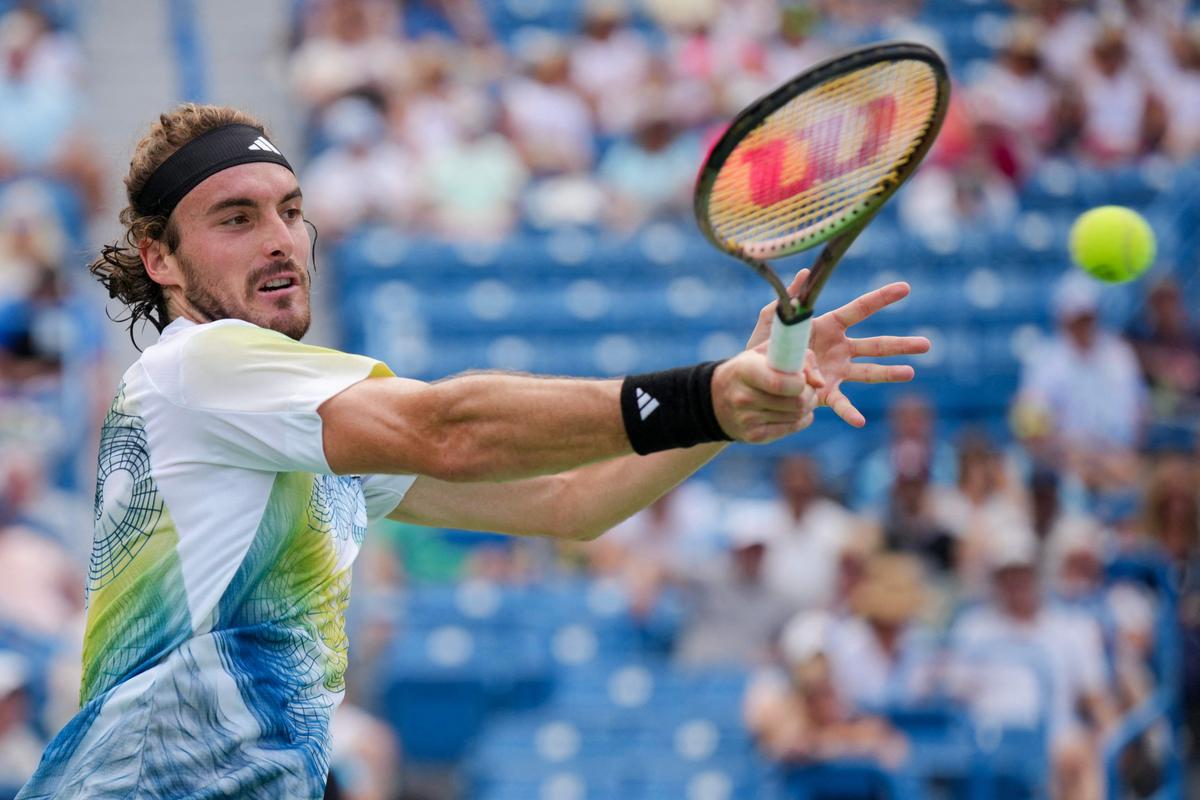
FILE PHOTO: Stefanos Tsitsipas.
| Photo Credit:
Getty Images
FILE PHOTO: Stefanos Tsitsipas.
| Photo Credit:
Getty Images
Tsitsipas’s tactics have failed miserably at the US Open, where he’s won only five matches in five appearances. Unless he swallows his pride and changes a losing game, he won’t make it to the quarterfinals.
Casper Ruud: The 24-year-old Norwegian’s last name belies his mild-mannered personality. Casper said his goal is to go his entire career without smashing a racket. There was no chance of that in 2022 when he enjoyed a career year. Ruud made the French and US Open finals and captured clay-court titles at Gstaad, Geneva, and Buenos Aires.
Instead of taking a much-needed rest in December, Ruud and his good friend Nadal went on a lucrative exhibition tour in Argentina, Brazil, Ecuador, and Bolivia. All the matches wore him out because this season he’s often faltered—aside from reaching the Roland Garros final again.
Perhaps Ruud can channel his inner Viking warrior spirit to recapture his 2022 form. Towards that end, he looked mighty tough with a sword and shield in a recent photo shoot in Norway.
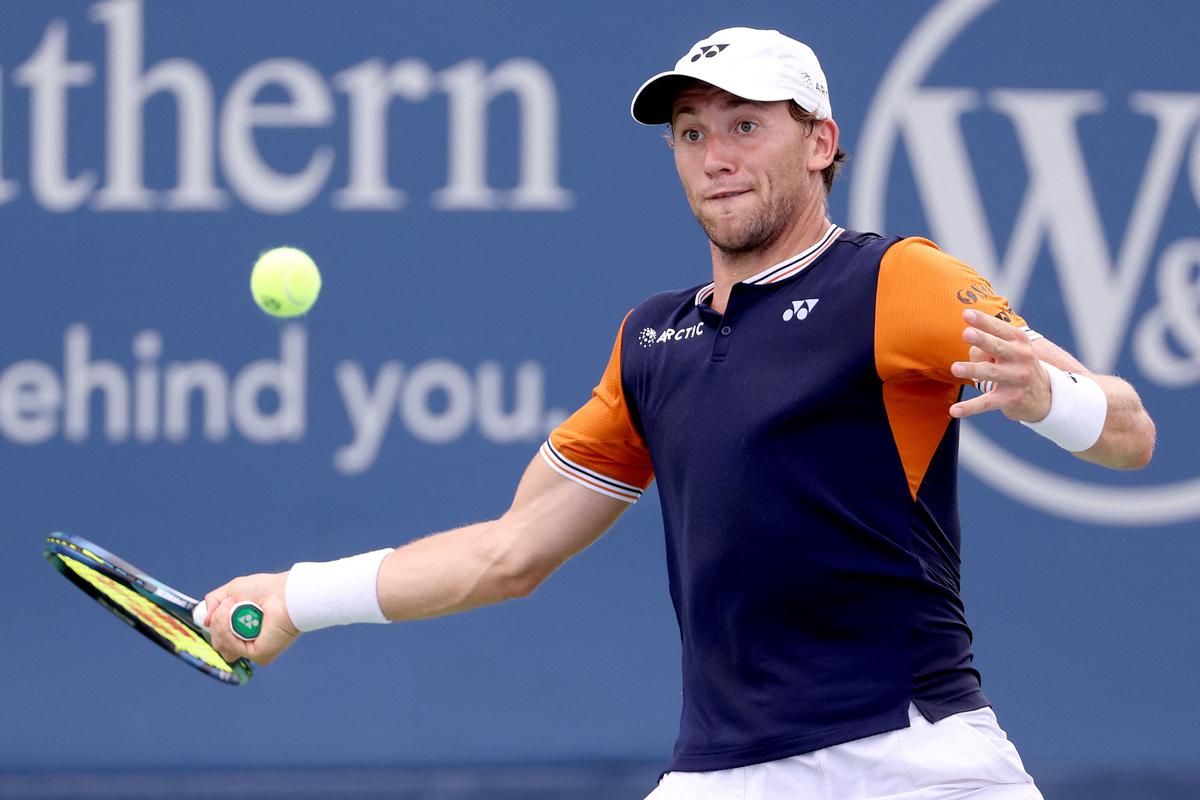
FILE PHOTO: Casper Ruud.
| Photo Credit:
Getty Images
FILE PHOTO: Casper Ruud.
| Photo Credit:
Getty Images
Two career stats should worry Ruud fans. He’s a woeful 0-14 against these five recent Grand Slam winners—Federer, Nadal, Djokovic, Medvedev, and Alcaraz. Further, Ruud has never captured a title bigger than an ATP Tour 250 event.
With a confidence-sapping 5-6 record on hard courts this year (as of August 6) and improved young guns like Rune and Sinner to fend off, Ruud likely won’t get past the quarters.
Alexander Zverev: “It’s been the hardest year of my life.” After he defeated Frances Tiafoe in the French Open third round, Zverev recalled the horrendous ankle injury he suffered a year earlier in the semis against Nadal and his long rehabilitation.
“I love tennis more than anything in the world,” the 26-year-old German said. “I don’t play for the money or the fame; I play for the pure sport. I play for competitiveness, and I love being in front of [the crowd]. Being away from that, having that taken away from me… I’m so happy to be playing these big battles again.”
In the biggest battles during his 10-year pro career, though, the 6’6” rocket first server has seldom competed well—aside from winning the Tokyo Olympics and two ATP Finals. On critical points in must-win games, all too often a nervous Zverev has missed makeable volleys, rallied passively, or double-faulted.
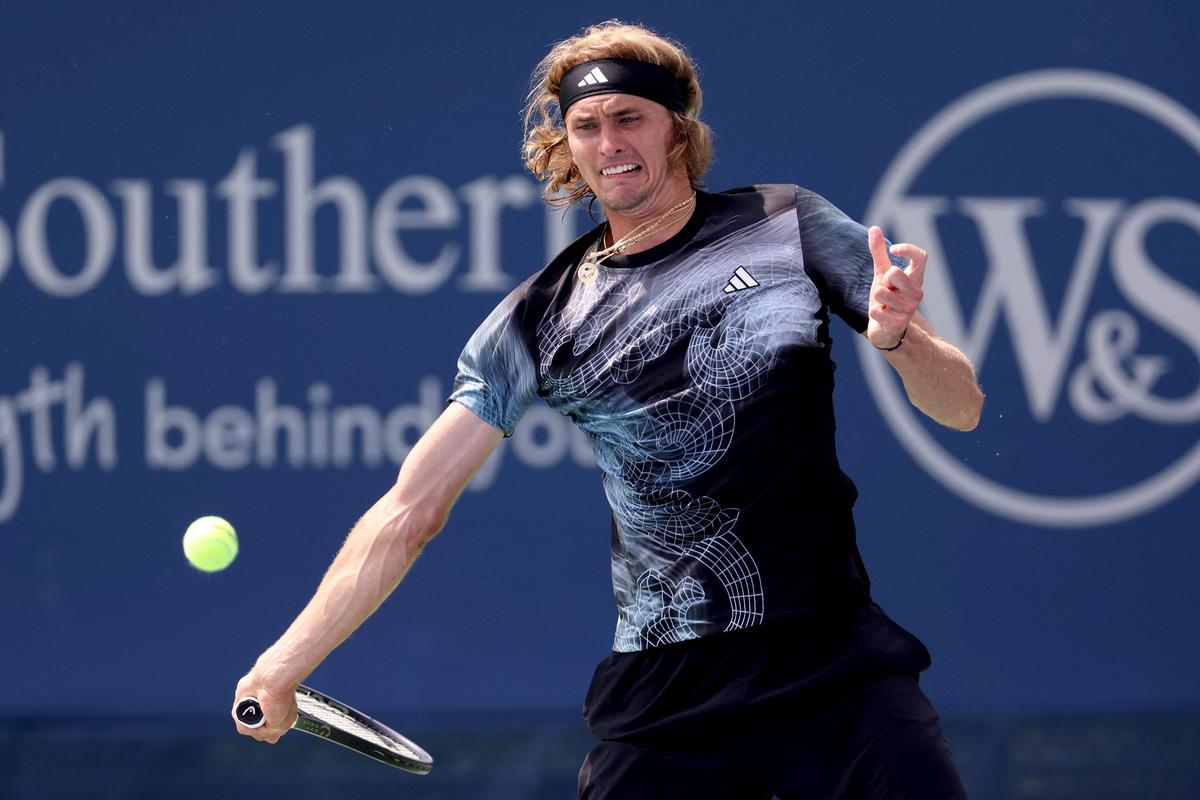
FILE PHOTO: Alexander Zverev.
| Photo Credit:
Getty Images
FILE PHOTO: Alexander Zverev.
| Photo Credit:
Getty Images
He had what he called “a massive chance for us younger guys” to capture his first major title at the 2020 US Open because Nadal and Federer didn’t enter and heavy favourite Djokovic was disqualified for inadvertently hitting a line judge with a ball. However, Zverev squandered a two-set lead in the final against Dominic Thiem and lost a 2-6, 4-6, 6-4, 6-3, 7-6(6) heartbreaker.
After No. 4 Ruud demolished Zverev at the French Open in June, one stat revealed the latter’s predicament: He’s only 1-13 versus top-10 opponents at majors (versus 41 top-10 wins in best 2-of-3-set matches). If Zverev plays the big points aggressively, he’ll make the quarters.
Novak Djokovic: Chris Evert knows how Djokovic must feel after Spanish sensation Alcaraz thwarted the Serb’s bid for a record-tying eighth Wimbledon crown, a record-extending 24th major title, and a rare Grand Slam this year. “Novak’s got someone to deal with now, for sure,” Evert, an 18-time major singles champion, told The New York Times. “It’s like when Steffi Graf came up and started beating me and Martina [Navratilova]. We saw right away how good she was, and she went on to win more Slams than either of us.”
It’s way too early in Alcaraz’s career to predict if he’ll wind up with more Slams than any of the Big Three. But Djokovic can make his Slam record tougher to break by turning the tables on Alcaraz and avenging his Wimbledon loss.
After romping to the French Open title in June, Djokovic said, “36 is the new 26.” He’ll get another chance to prove that on Sunday, September 10. The bet here is that, once again, youth will trump experience.
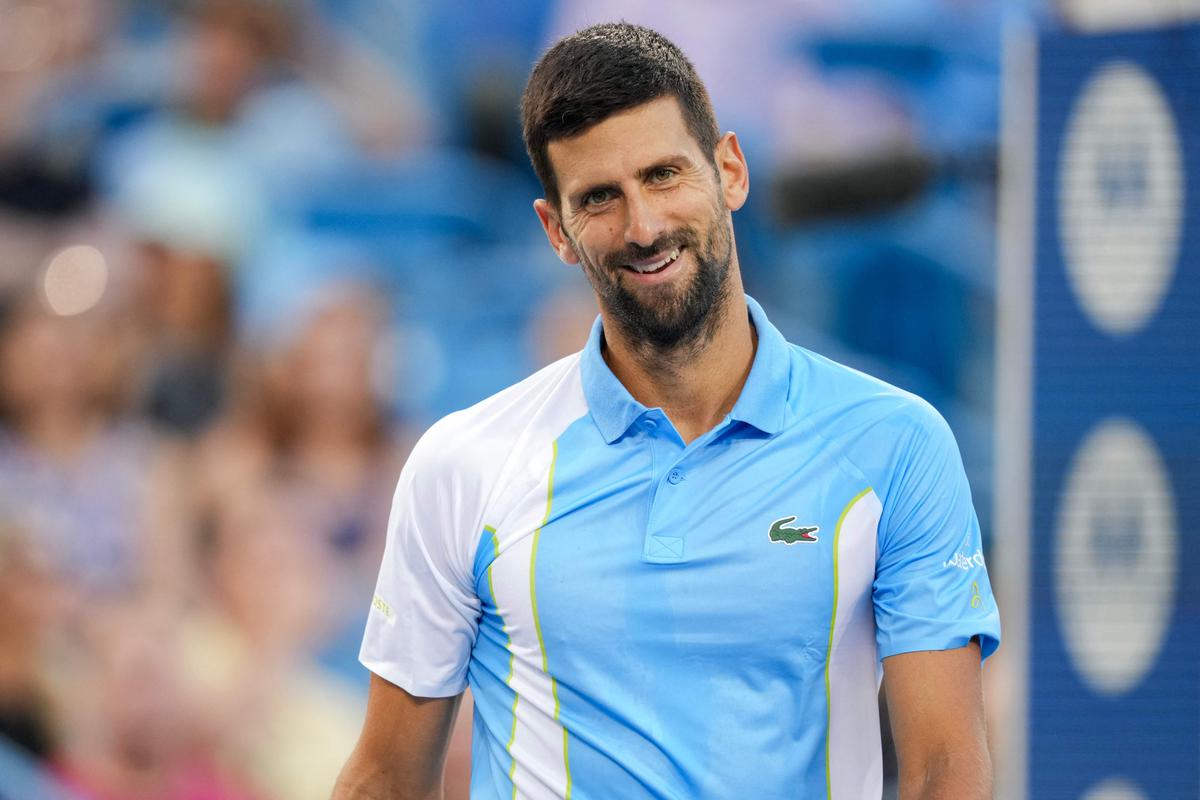
FILE PHOTO: Novak Djokovic.
| Photo Credit:
Getty Images
FILE PHOTO: Novak Djokovic.
| Photo Credit:
Getty Images
Carlos Alcaraz: “It’s great for the new generation to see me beating him and making them think that they are capable of doing it,” Alcaraz said after upsetting Djokovic in the dramatic, five-set Wimbledon final.
Those encouraging words reflect Alcaraz’s generous spirit because he’s a sui generis champion, as Djokovic was quick to acknowledge. “I haven’t played a player like him ever, to be honest,” Djokovic said. “Roger and Rafa have their strengths and weaknesses. Carlos is a very complete player.”
Besides being very complete technically, Alcaraz is precociously astute tactically. Add his terrific athleticism—especially his dazzling speed—and his ability to excel on big points and in deciding sets, and you have a player the tennis world has never seen before.
If these attributes aren’t already enough to dominate the sport, Alcaraz has a secret weapon to release the tension when the pressure reaches a crescendo. “Smiling for me, as I said a few times, is the key to everything.”
Alcaraz will make us smile aplenty this fortnight at Flushing Meadows as he captures his second US Open and third Grand Slam crown.
Dark Horses: Andrey Rublev, Arthur Fils, Christopher Eubanks, Jiri Lehecka, and Sebastian Korda
WOMEN — MUSICAL CHAIR
“It’s like watching a movie, and you don’t know what’s going to happen. That’s the beauty of tennis.” — Ons Jabeur
What happened to the so-called Big Three of women’s tennis? When Elena Rybakina won the 2022 Wimbledon and Aryna Sabalenka won the 2023 Australian Open, defeating Rybakina in the final, these tall power hitters created a new trio, joining No. 1-ranked Iga Swiatek at the top of the sport. Or so we thought.
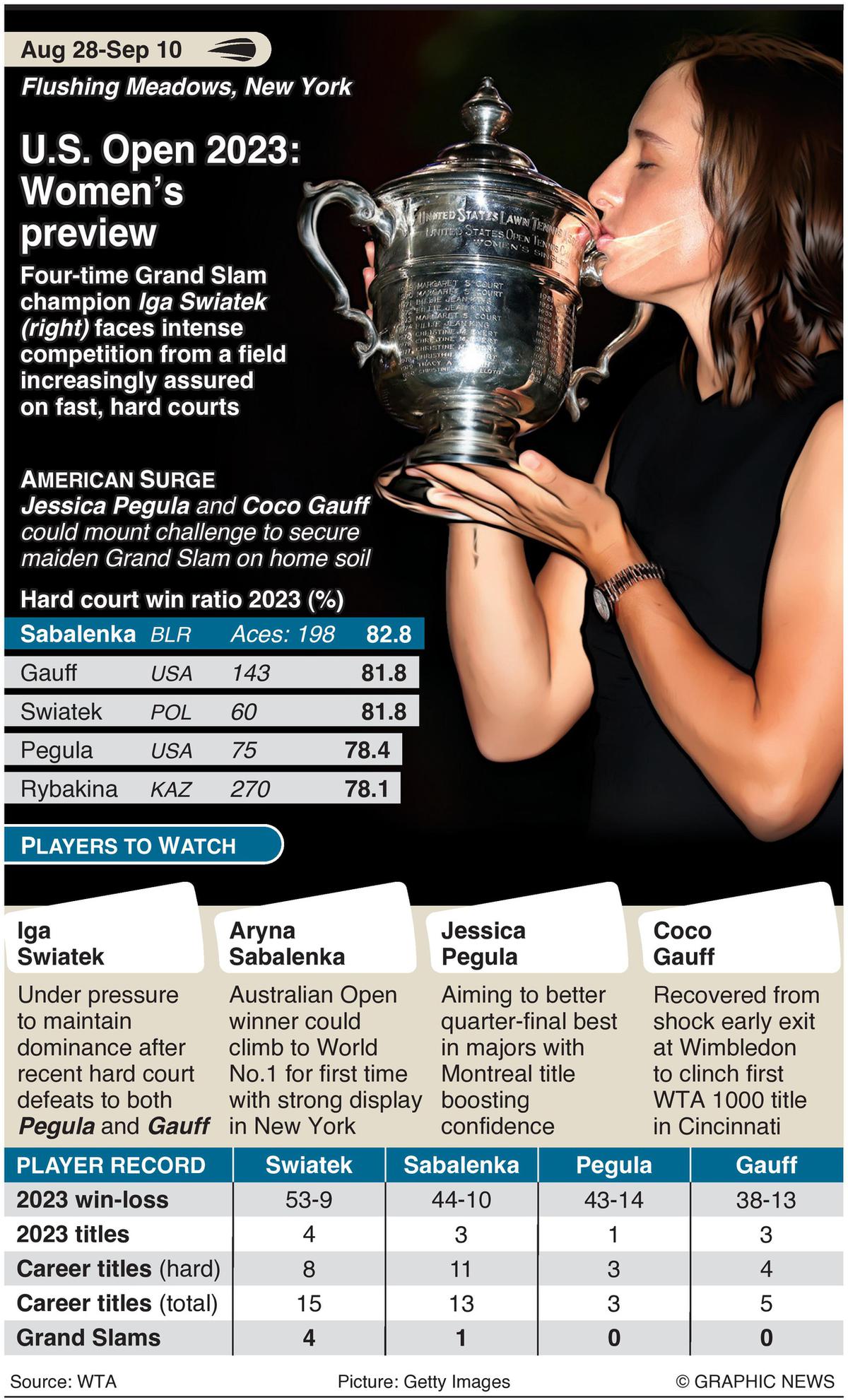
Sure, Swiatek remains in a class of her own on clay, much like the young Rafael Nadal, her girlhood idol. But on grass and hard courts, the argument went, Rybakina and Sabalenka were now the clear favourites.
ALSO READ – US Open 2023 women’s draw: Swiatek vs Gauff, Sabalenka vs Jabeur amongst projected quarterfinals
Not so fast! Wimbledon demonstrated, at least on grass, that supremacy is still up for grabs, or, as Jabeur put it, “You don’t know what’s going to happen.” Jabeur, an undersized (5’6”), crafty Tunisian, did the heavy lifting by upsetting No. 2 Sabalenka and No. 3 Rybakina, only to be upset herself in the final by an 80-1 longshot against Marketa Vondrousova.
My tennis friend Clara Clairvoyant informed me that the order will be restored on the relatively fast hard courts at the US Open. Let’s take a close look at the Big Three and their likely challengers, and then predict the champion.
FILE PHOTO: Coco Gauff.
| Photo Credit:
Reuters
FILE PHOTO: Coco Gauff.
| Photo Credit:
Reuters
Coco Gauff: Since making her only Grand Slam final at the French Open last year, The Great American Hope has had mixed results. Gauff, still only 19, failed to advance past the quarters at a major, but she edged Sabalenka and Rybakina—both by 7-6 in the third set—at Toronto in 2022 and won titles at Auckland, Washington, D.C., and Cincinnati this season.
After a disappointing first-round loss at Wimbledon, Coco rebounded in Washington with resounding victories over Olympic gold medalist Belinda Bencic 6-1, 6-2, defending champion Liudmila Samsonova 6-3, 6-3, and No. 9 Maria Sakkari 6-2, 6-3.
Gauff has a new team of full-time coach Pere Riba and temporary consultant Brad Gilbert, who is renowned for igniting Andre Agassi to greatness. They’ve improved her serve and forehand, told her to take more time between points when she’s struggling, and convinced her to play more aggressively.
Gilbert also encouraged Gauff to have more fun. “Then I realise these emotions are building up, and I’m not having fun,” said Gauff. “So now I’m just like, ‘I’m going to let it happen; play into the crowd.’ I want to have fun playing tennis, and I think I lost that for a little bit. But I’m really finding it.”
Don’t be surprised if the new and relaxed Gauff, inspired by roaring, partisan fans at Flushing Meadows, reaches the semifinals.
Jessica Pegula: “I would love to crash the big three party, if possible. That would be definitely a goal,” said world No. 3 Pegula. To achieve that, the 29-year-old American would have to fare much better at the majors, where she’s never gone past the quarterfinals in six attempts. That Pegula has captured only two WTA titles also reflects her relatively low ceiling.
FILE PHOTO: Jessica Pegula.
| Photo Credit:
Reuters
FILE PHOTO: Jessica Pegula.
| Photo Credit:
Reuters
In Pegula’s 6-4, 2-6, 6-4 Wimbledon quarterfinal loss to Vondrousova, she led 4-1 and had a break point for 5-1 in the deciding set but missed a makeable backhand, her best shot. Though her groundstrokes are rock-solid, they have one of the lowest spin rates, around 1,500 rpm, on the WTA Tour, which makes them easier for opponents to handle. Even so, Pegula has broken serve in a sensational 44 percent of her return games. Unlike Rybakina and Sabalenka, she doesn’t have a powerful first serve. Her biggest weakness is a second serve, sometimes less than 80 mph and poorly placed. As a result, Pegula has held serve only 71 percentthe time.
Pegula’s tennis idol was Martina Hingis, the best tactician in women’s tennis history. She would do well to emulate Hingis—also 5’7” and a nondescript server—by using more variety and deception. That means more drop shots, angles, changes of pace, and net approaches.
Until Pegula expands her game plan, expect more quarterfinal finishes at majors.
Ons Jabeur: “My game reflects my character,” Jabeur told ESPN during her run to the Wimbledon final. “I don’t like routine. I like to entertain the crowd.” The smiling sorceress from Tunisia defuses and discombobulates rivals with an audacious array of trick shots like tweeners and touch shots like drop volleys and drop shots.
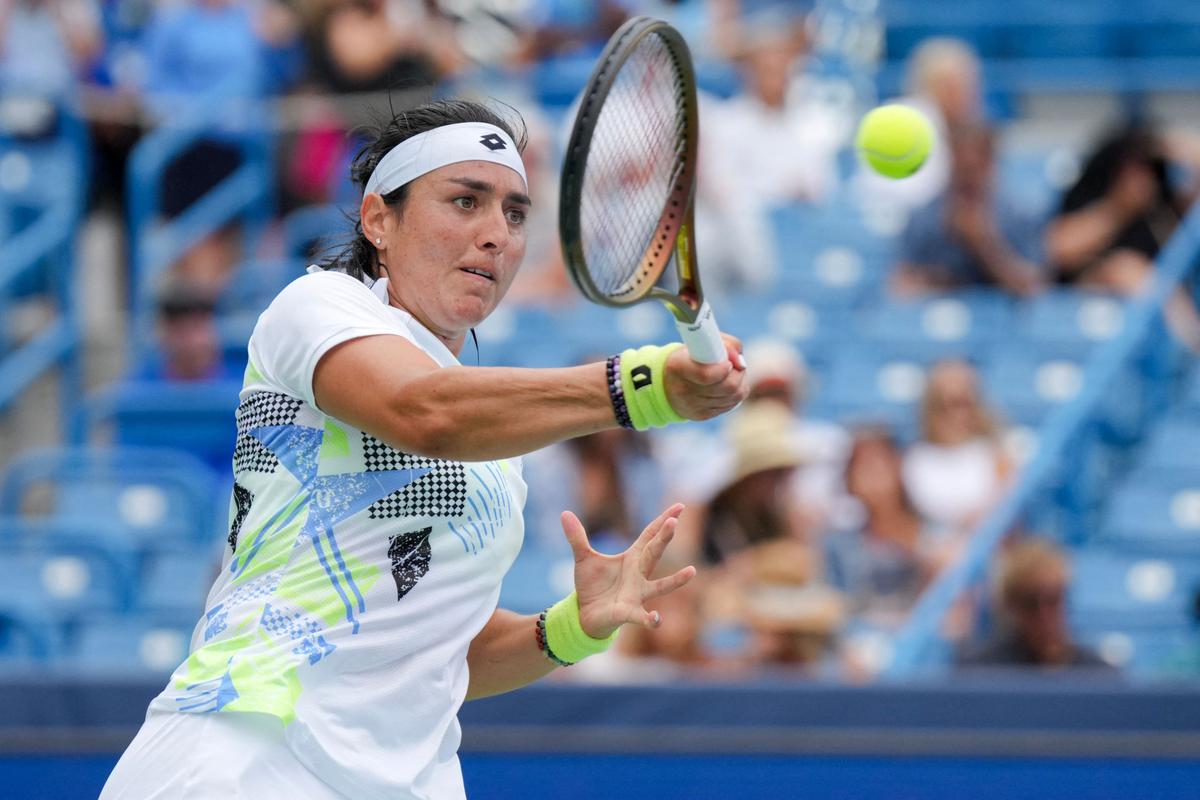
FILE PHOTO: Ons Jabeur.
| Photo Credit:
Getty Images
FILE PHOTO: Ons Jabeur.
| Photo Credit:
Getty Images
Pleased with her versatility during her 6-7(5), 6-4, 6-1 quarterfinal victory over Rybakina, Jabeur said, “I was enjoying using her power and enjoying showing that I’m not one kind of player that only mixes and does drop shots and slices. Also, if you want to hit hard, I’m here to hit as fast as I can. I did show that. Not only to the player, I showed it to myself, too.”
The same skills and tactics that also stymied Sabalenka 6-7(5), 6-4, 6-3 didn’t work in the final. Against Vondrousova, a canny lefty counterpuncher with plenty of shot variety, there was nothing to defuse. Nerves, faulty shot selection, and a mediocre backhand did in the error-prone Jabeur, as she succumbed 6-4, 6-4.
Jabeur—who reached the US Open final a year ago without beating a top-15 opponent—may become the first Tunisian and Arab to win a major. But it won’t happen on hard courts. A fourth-round (or earlier) loss is more likely this year.
Elina Svitolina: “I think having a child, war, has made me a different person,” the 28-year-old Ukrainian said after upsetting No. 1 seed, Swiatek, 7-5, 6-7(5), 6-2 in the Wimbledon quarterfinals. “Mentally, I don’t take situations as disasters. There are worse things in life. I’m just calmer.”
Just 10 months after Svitolina, the wife of former world No. 6 Gael Monfils, gave birth to daughter Skai, she became the feel-good story of The Championships. Besides Swiatek, she defeated three other Grand Slam champions—Venus Williams, Sofia Kenin, and Victoria Azarenka—plus 28th seed Elise Mertens. “After giving birth to our daughter, I think this is the second happiest moment in my life,” Svitolina told Centre Court spectators following her 2-6, 6-4, 7-6(9) comeback victory over Belarusian Azarenka.
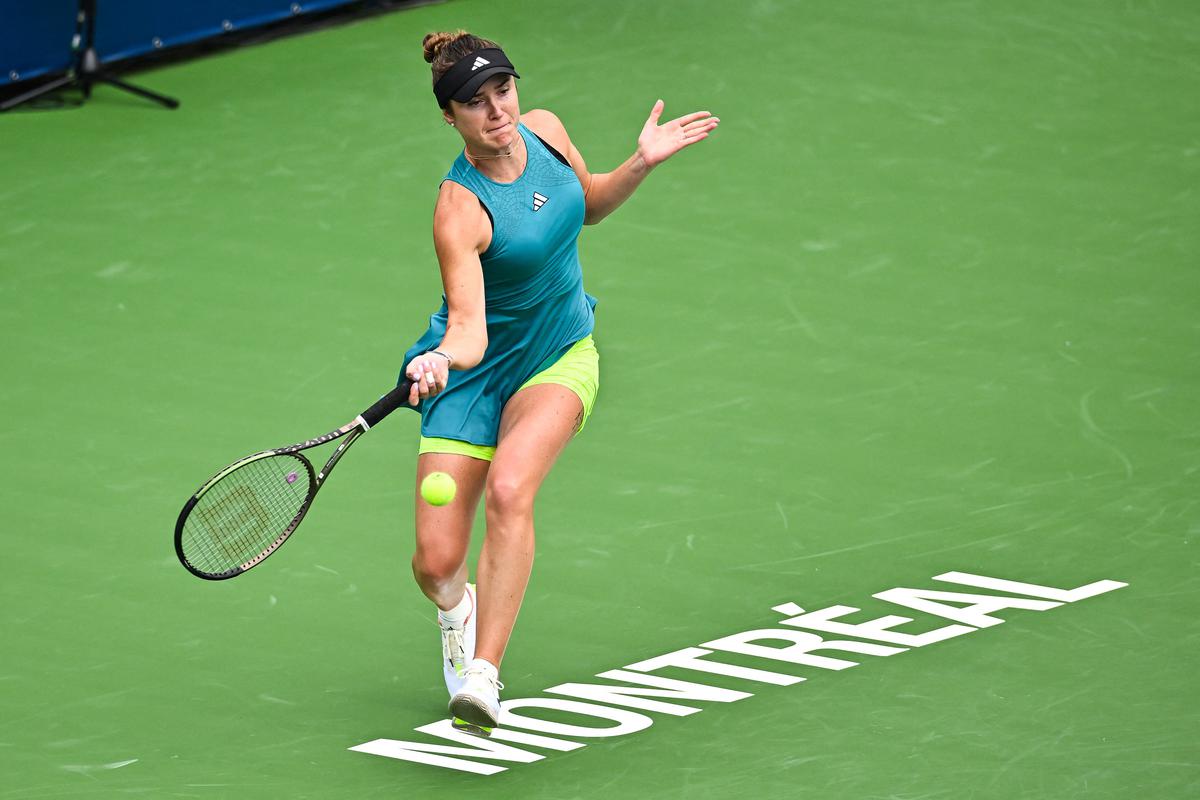
FILE PHOTO: Elina Svitolina.
| Photo Credit:
Getty Images
FILE PHOTO: Elina Svitolina.
| Photo Credit:
Getty Images
However, not even cries of “We love you, Elina” from the partisan crowd could ignite a comeback during her 6-3, 6-3 semifinal loss to Vondrousova.
Although Svitolina rose to a career-high No. 3 in 2017, she’d never reached the final at a major. While she had no glaring weaknesses, she possessed no exceptional weapons either.
So, Svitolina added more power to her sound groundstrokes and serves—she smacked eight aces against Swiatek—and variety to her relentlessly consistent but predictable game. Her newfound aggression and the joys of motherhood could take Svitolina to another major semifinal.
Karolina Muchova: At her athletic, versatile best, the late-blooming Muchova reminds this observer of a combination of fellow Czech Hana Mandlikova—a four-time major winner in the 1980s—and former No. 1 Ashleigh Barty.
The 26-year-old Czech finally started fulfilling her great potential at the French Open in June, where Muchova knocked out No. 8 seed Sakkari 7-6(5), 7-5 in the first round and stunned No. 2 seed Sabalenka 7-6(5), 6-7(5), 7-5 in the semis.
Muchova showed those wins weren’t flukes when she nearly upset Swiatek, the Queen of Clay, in a rousing, fluctuating final. After breaking serve for 4-3 in the deciding set, Muchova sabotaged her chances with a bad drop shot error to lose her serve for 4-all and a double fault on championship point to lose 6-2, 5-7, 6-4.
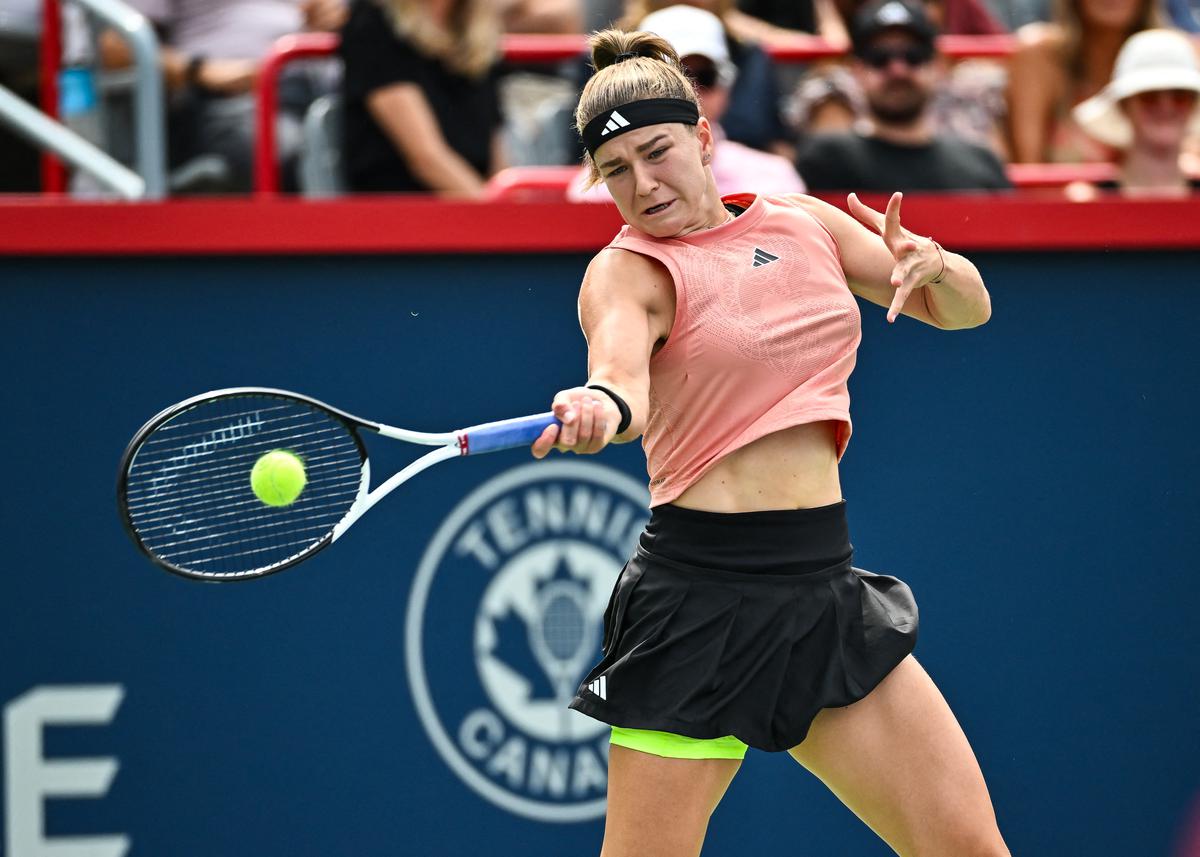
FILE PHOTO: Karolina Muchova.
| Photo Credit:
Getty Images
FILE PHOTO: Karolina Muchova.
| Photo Credit:
Getty Images
“It just shows me that I can play against them [top players], I can compete, and the matches are super close,” said Muchova afterwards. That’s something of an understatement because, before the dramatic final, she boasted a 5-0 record against No. 1-ranked opponents—with four coming at Grand Slam events and on all three surfaces.
Despite her lacklustre 7-5 career record at Flushing Meadows, Muchova will reach at least the round of 16 and perhaps much farther this year.
Iga Swiatek: Besides the best forehand in women’s tennis, blazing speed, and intense concentration, what makes Swiatek, a four-time major winner at age 22, the No. 1 player in the world?
“If I coached a junior player, I’d advise her to look at Iga Swiatek’s footwork,” said former No. 1 Caroline Wozniacki, a Tennis Channel analyst who recently returned to competition after a three-year layoff. “She’s moving [constantly] to adjust to offense or defense on every point.”
At Wimbledon, however, low-bouncing slices bedevilled her Western forehand and two-handed backhand.
She lacked either the versatility or the tactical awareness to change a losing game in her upset loss to Svitolina.
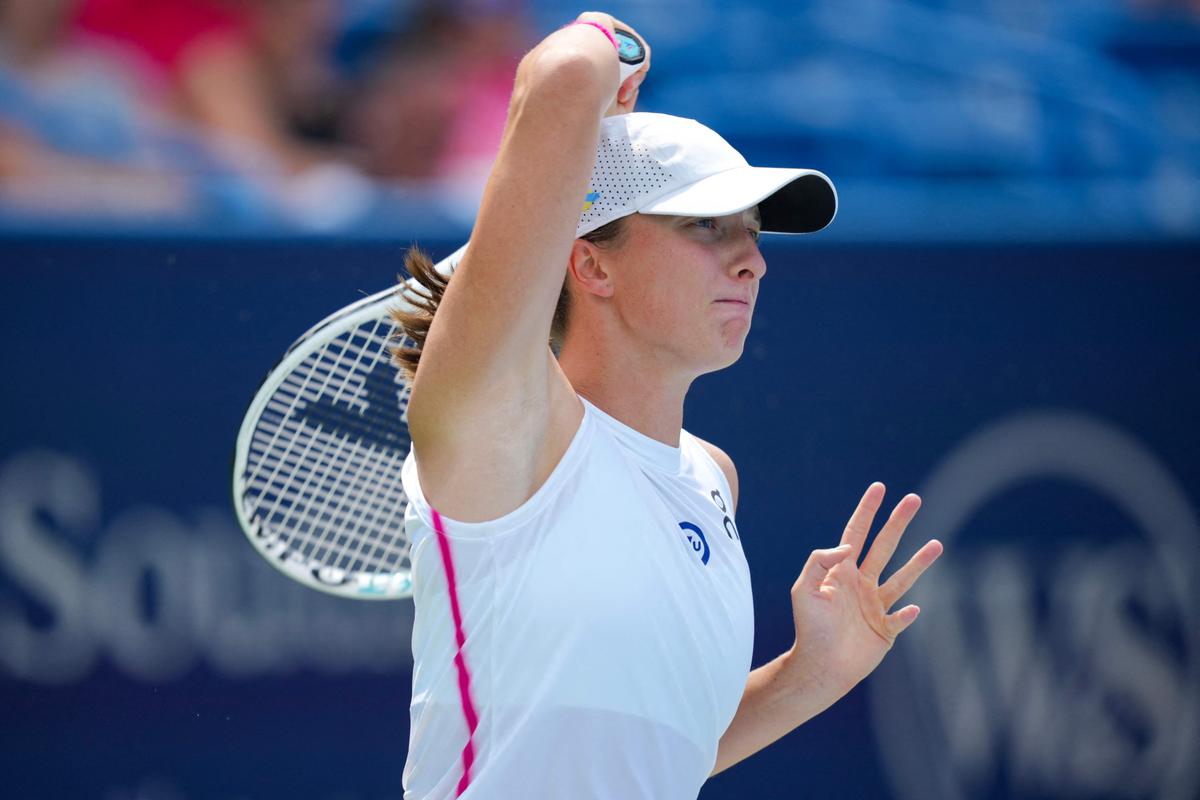
FILE PHOTO: Iga Swiatek.
| Photo Credit:
Getty Images
FILE PHOTO: Iga Swiatek.
| Photo Credit:
Getty Images
Furthermore, the 5’9” Pole can be overpowered. Rybakina has defeated her all three times they’ve played this year; Sabalenka has won two of their last three matches; and Jelena Ostapenko owns a 3-0 record against Swiatek.
Swiatek is terrific in tournament finals—15-4 overall and 4-0 at Grand Slam events. But the defending champion won’t make it to this final.
Aryna Sabalenka: Reminder messages abound for Sabalenka to heed. Her coach, Anton Dubrov, wears a T-shirt that says, “Improvise, Adapt, Overcome.” Sabalenka has a large tiger tattoo on her forearm. How well the sometimes tactically inflexible and emotionally fragile Belarusian summons these attributes usually determines her fate.
Exhibit A: At the Australian Open in January, Sabalenka finally exorcised her demons as a choking underachiever. She shrugged off the scar tissue from three disappointing major semifinals—losing them all 6-4 in the third set—to beat Magda Linette 7-6, 6-2 in the Melbourne semis. Then the heavy-hitting Belarusian rebounded from a slow start to vanquish Rybakina 4-6, 6-3, 6-4 for her first Grand Slam title.
Before the final, ESPN analyst Brad Gilbert rightly predicted, “It’s all about serves and nerves.” Sabalenka, who committed an astounding 428 double faults in 2022 and is the most emotional top-10 player, mastered both in the biggest match of her life.
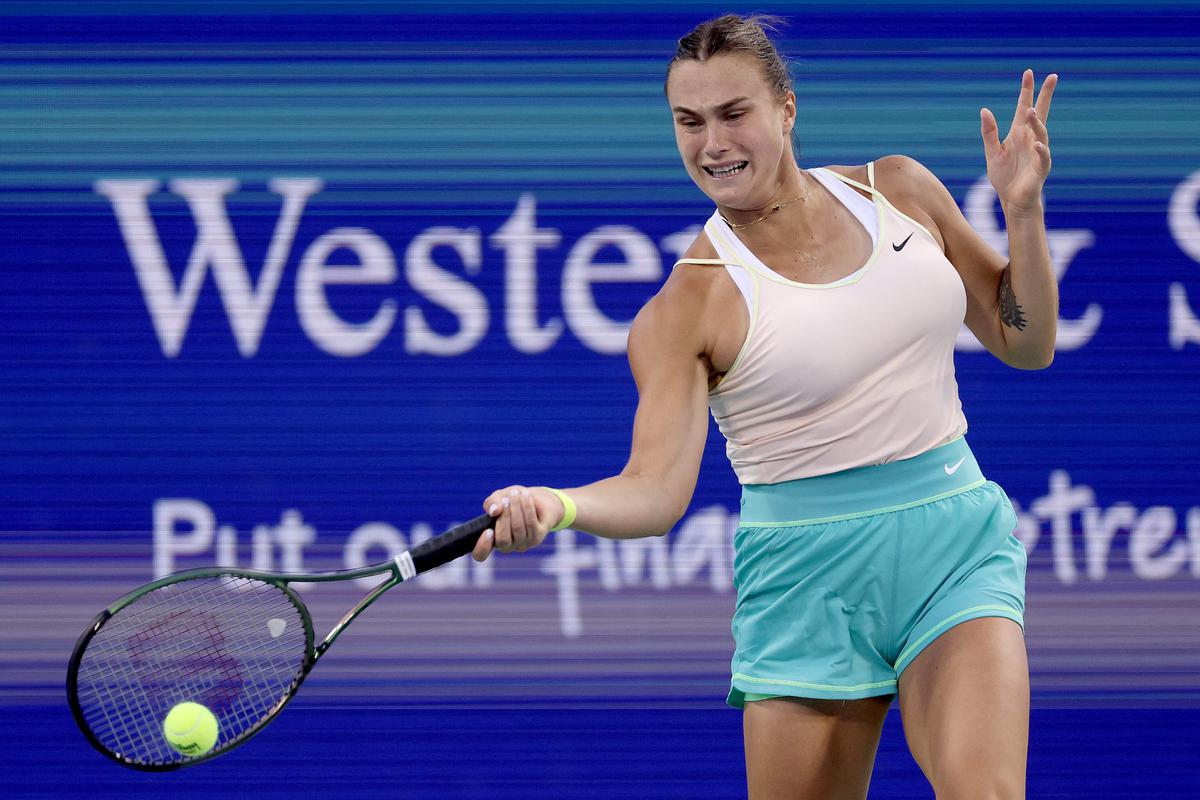
FILE PHOTO: Aryna Sabalenka.
| Photo Credit:
Getty Images
FILE PHOTO: Aryna Sabalenka.
| Photo Credit:
Getty Images
Exhibits B and C: Ghosts of past semifinal collapses haunted Sabalenka at the French Open and Wimbledon. At Paris, Karolina Muchova trailed 2-5, love-30 in the deciding set, but Sabalenka’s unforced groundstroke errors in that game and two costly double faults at 5-5 helped Muchova prevail 7-6 (5), 6-7 (5), 7-5. In another psychodrama at Wimbledon, Aryna led Jabeur 7-6, 4-3, 40-30 only to fall apart with two unforced errors and a double fault. She eventually lost 6-7, 6-4, 6-3.
Which Sabalenka will show up at the US Open? The best version. But even that won’t be good enough, and she’ll lose a three-set thriller in the final.
Elena Rybakina: “She’s an amazing player,” Jabeur said during Wimbledon. “You can see she’s like ‘boom boom’ all the time! There’s no mercy with her.”
Rybakina’s take-no-prisoners power game starts with an explosive serve. She leads the WTA Tour with 349 aces (against only 118 double faults) and ranks fourth in service games won (81.1 percent). Her booming, flawless groundstrokes are the other cornerstones, and she pounds them relentlessly into the corners. Another critical stat: Rybakina is a superb 12-1 in tiebreakers this season.
The 24-year-old Kazakh doesn’t have Swiatek’s speed or Jabeur’s finesse, but she seldom needs these assets because she’s on the offense so much.
“She reminds me of [former No. 1] Lindsay Davenport because she attacks with the serve and return of the serve, so you’re always under pressure,” said ESPN analyst Mary Joe Fernandez.
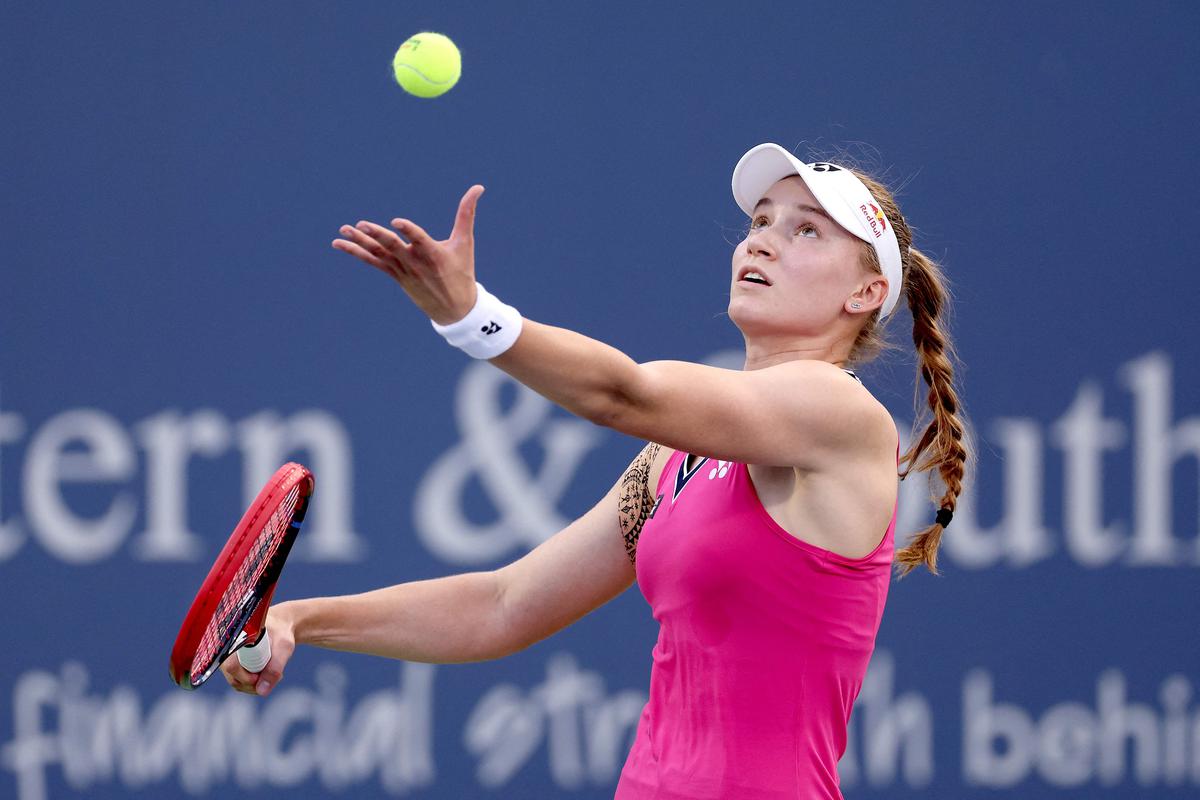
FILE PHOTO: Elena Rybakina.
| Photo Credit:
Getty Images
FILE PHOTO: Elena Rybakina.
| Photo Credit:
Getty Images
Her favourite surface is hard courts, and her record this year reflects that predilection. She reached the Australian Open final (beating Swiatek, Ostapenko, Azarenka, and Danielle Collins), won Indian Wells (beating Swiatek, Muchova, and Paula Badosa), and made the Miami final (beating Pegula and Badosa).
Although Rybakina has never advanced past the third round at the US Open, keep in mind that she never went beyond the fourth round at Wimbledon before she won it last year.
What makes the low-profile Rybakina tick and succeed? “She leads a very quiet life, and she is very happy that way,” said former superstar Evert. “She doesn’t want to get out of her bubble.”
Rybakina has more than enough weapons and an ideal temperament to win her second major title before boisterous—and sometimes raucous—crowds at Flushing Meadows.
Dark Horses: Jennifer Brady, Liudmila Samsonova, Mirra Andreeva, Qinwen Zheng, and Alycia Parks

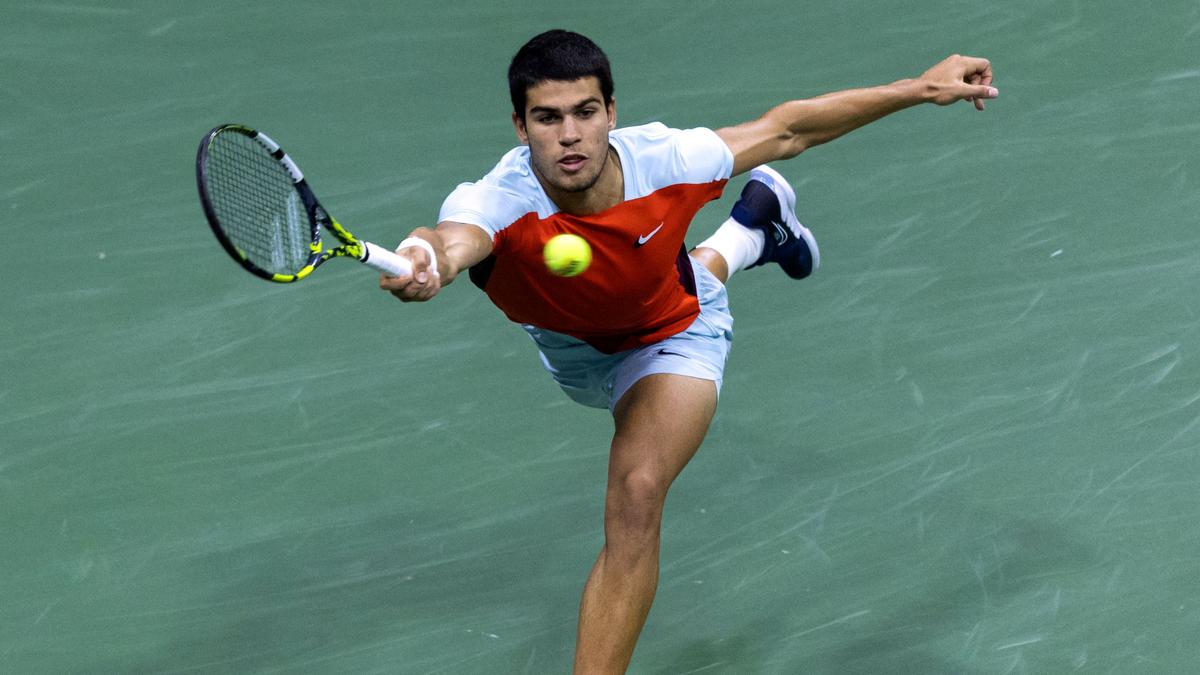


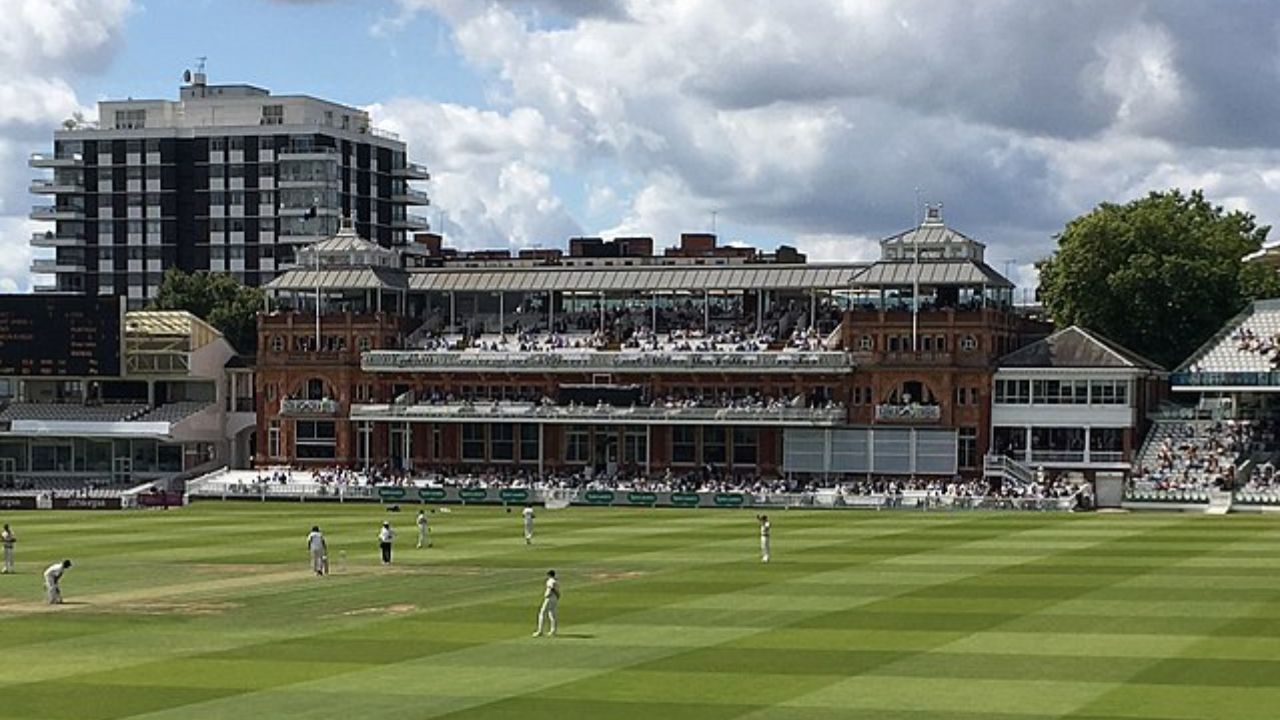


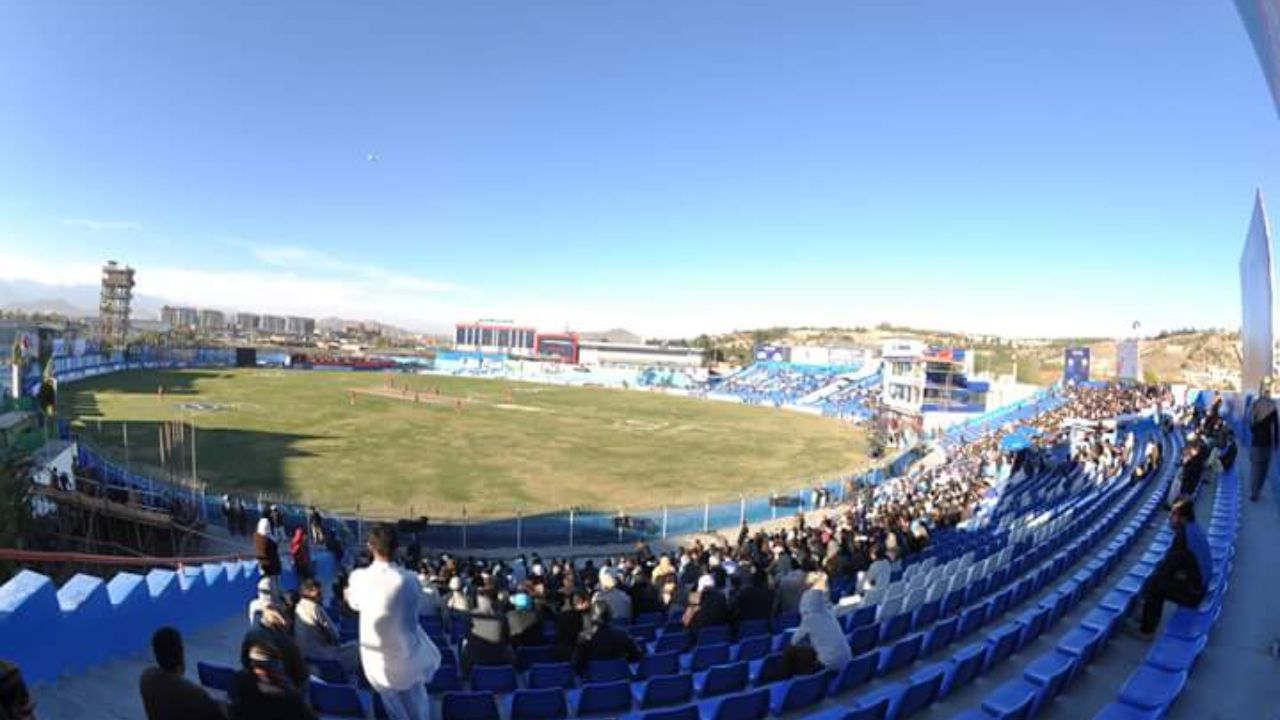


Leave feedback about this